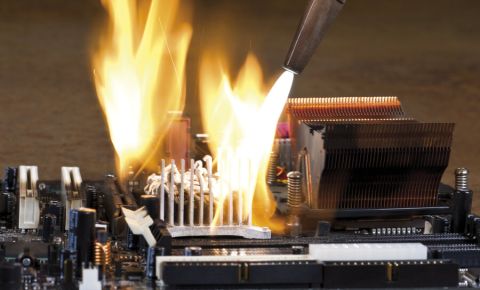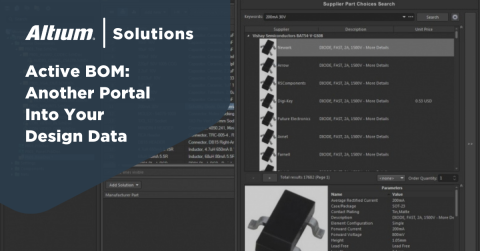BOM Cost Analysis Shows PCB Design Savings Just Over the Horizon
Ever have a rocky day? Or have the wind taken out of your sails? These and many other phrases have some of their roots as nautical expression but have been adapted for everyday use. “Keeping a weather eye,” for example, means to pay attention to the weather regardless of what else you might be doing. Sailors might not have intended to start this linguistic drifting, but at sea, overlooking a rapidly approaching cloud or a brief drop in the wind can spell disaster.
I might not be sailing across the Atlantic ocean anytime soon, but in the world of electronics manufacturing, I still find it important to keep a weather eye. In this case, I keep my weather eye on bill of materials (BOM) costs and consider what the product will cost to build throughout the design process. Don’t let your project get sunk by cost overruns by keeping track of the practicality of manufacturing your design.
Project Planning with BOM Cost Considerations and Analysis
From the start of the planning phase for a new project the cost will always be a concern. Once a product’s feature set is defined, management has a responsibility to determine what portion of the overall cost will be borne by what department based on the resources available. For example, using an expensive data acquisition (DAQ) card instead of an integrated microprocessor solution might mean spending more on hardware for each unit, but it can save on the cost of electronics and software development. Once these decisions have been made, BOM cost savings analysis for PCB design can begin with the creation of a functional block diagram.
During functional block diagram creation, several areas will usually present themselves as opportunities for potential cost savings. In the example of analog signal processing, a decision can be made to use discrete transistor solutions, custom amplifier packages or a combination of both. This has direct BOM cost ramifications and can change power supply and component tolerance requirements that affect cost further. Similarly, deciding whether to use gates or a more integrated digital solution for board logic affects an array of elements including power requirements, status indication methodology, signal formats and level shifting. By and large, all of these decisions have an impact on PCB size, which can also be a significant contributor to BOM cost.
On the Lookout: Schematic Entry, Board Layout and Beyond
Schematic entry is when the majority of the BOM components are determined. During this phase of the project, checking that added components do not have any unexpected costs associated with them on a semi-regular basis is a good idea. This checking is to be expected when adding complex components like specialized semiconductors, but it is easy to overlook the fact that a small value decoupling capacitor might be rated for a very high voltage, or that a resistor has a much higher tolerance than is necessary. Checking your BOM part prices during the process can help prevent repeating work down the road while keeping your weather eye on BOM cost.
Layout can take quite a while to complete, and during that time it is natural not to have too much interaction with the BOM. As a result, surprising changes in pricing can happen before it’s time to order that first prototype. A good software feature for BOM systems is the BOM’s histories of availability and price for any anomalies which may indicate that it would be wise to plan for alternate components or even another design strategy.
For larger projects, make sure to provide enough time to navigate any purchasing issues that might occur before its production run. If you wait until the bitter end to check on part availability and prices, you may end up marooned by last-minute design changes and inventory management problems.
Sextant or Astrolabe: Find the Right Tools
Depending on the size of a project and the time available for it, it may be advisable to explore several options during the circuit simulation and proof of concept construction phases of development. Once a circuit board’s proposed functions are defined, using a comprehensive electronics design software can be a big help when simulating new concepts. By linking your SPICE simulation models directly to library components, preliminary BOM costs can be more quickly and easily tracked through the use of the integrated BOM manager. This requires a small amount of extra work at the outset, but as a bonus, you also reduce duplicated efforts, automatically log any changes to component simulation models, and improve overall organization in the long run.
Like the sea, the market for electronic components is continually changing. Availability and prices can fluctuate as the result of both the trials of man and nature. Luckily, there’s a solid set of software tools in Altium that can make charting a course for your product’s success much easier. Altium’s ActiveBOM can be configured to provide real-time information on price and availability. Historical tracking of component pricing and availability can give you much more insight to market behavior, enabling a better command of the project from stem to stern.
With ActiveBOM you can concentrate more on design, knowing that your final BOM cost won’t leave your manager taken aback. If you have more questions on how to optimize your BOM to design smarter, try contacting an expert at Altium today.










